|
|
|
|
Life in Eswatini |
Life in Eswatini |
Life in Eswatini | Life in Eswatini |
For
facts, information, videos and photos of Eswatini/Swaziland, check out our profile pages.
More >
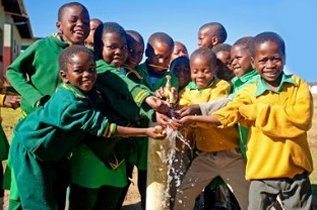 |

The difference being that traditionally crops were grown to eat, whereas now many grow crops to sell to purchase food. The manufacturing sector is also currently under threat as its main products, textiles and sugar, are losing their markets with many countries are now looking to the east for cheaper imports.
As such, bringing a bride, an unknown spirit, into the homestead, is a major event and new brides will often be abused by the existing women in fear that she may disturb the future peace of the entire homestead. However this traditional family lifestyle is being eroded by the breakdown of the impact of HIV. If the younger generation manage to remain infection free themselves in adulthood, they would nonetheless have missed out on education (only one in five of all Swazi children attend secondary school in any event, partially down to the fees), and become homeless or forced to live with others who cannot afford to care for them, placing them at risk of violence and abuse. There are two main events in Swazi life, the Incwala in December and the Umhlanga in late August / early September. The Incwala is the more important of the two and most Swazi will converge at the Royal Kraal at Ludzidzini where they are joined by the king for weeks of dancing to celebrate 'first fruits'. The Umhlanga is the second most important cultural ceremony where uncommitted girls pay homage to the king and queen mother. In Eswatini life, children are not recognised as beings until they are three months old being described as 'things' with no names nor any physical contact with men. After three months they are acknowledged as a person and are normally carried in a sling on their mother's back, not being weaned until they are two or three years of age. The video below provides some insights into life in Eswatini. |
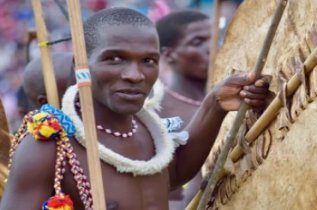 The World Health Organisation has even praised Eswatini for its "high level of political commitment" in managing HIV in the country. (Some of the methods, however, could be deemed extreme. For example in 2001 the king forbade men from sleeping with teenage girls for the next five years to help stem the spread of the virus and in 2009 one member of the Swaziland parliament suggested that there should be a compulsory AIDS test for every Swazi and those infected should be marked with a permanent logo on their buttocks.
The World Health Organisation has even praised Eswatini for its "high level of political commitment" in managing HIV in the country. (Some of the methods, however, could be deemed extreme. For example in 2001 the king forbade men from sleeping with teenage girls for the next five years to help stem the spread of the virus and in 2009 one member of the Swaziland parliament suggested that there should be a compulsory AIDS test for every Swazi and those infected should be marked with a permanent logo on their buttocks.
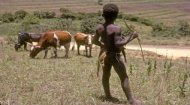
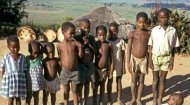
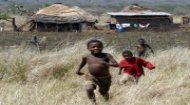

 Most Swazi (79%) live in rural communities with many villages comprising of a dozen or so traditional huts made from grass, reeds and mud. Running water isn't available for the vast majority, so much of each day is spend travelling to unprotected wells or to parasite contaminated rivers, where water carriers are filled up once or twice a day, depending on need. These rivers and unprotected wells are the main source of water for most inhabitants in Eswatini, particularly in rural communities where only 42% have access to tap water (rising to 87% in urban areas) and 59% of the population use pit latrines in the absence of any proper facilities leading to health issues. Daily life in Eswatini is centred around the traditional homestead with the kagogo (granny's hut) being the focus of activity and the sibaya (cattle byre) also playing an integral role. Next to the kagogo is the edladeni (main kitchen) which is where the women in the homestead will gather in the early evening to share knowledge with the young girls about the facts of life and the role of women in Eswatini culture and society. At the same time the men and boys of the family will gather in their own designated area ~ the esangweni ~ and the father will teach the boys similar facts of life, sex education and the role of the Swazi male.
Most Swazi (79%) live in rural communities with many villages comprising of a dozen or so traditional huts made from grass, reeds and mud. Running water isn't available for the vast majority, so much of each day is spend travelling to unprotected wells or to parasite contaminated rivers, where water carriers are filled up once or twice a day, depending on need. These rivers and unprotected wells are the main source of water for most inhabitants in Eswatini, particularly in rural communities where only 42% have access to tap water (rising to 87% in urban areas) and 59% of the population use pit latrines in the absence of any proper facilities leading to health issues. Daily life in Eswatini is centred around the traditional homestead with the kagogo (granny's hut) being the focus of activity and the sibaya (cattle byre) also playing an integral role. Next to the kagogo is the edladeni (main kitchen) which is where the women in the homestead will gather in the early evening to share knowledge with the young girls about the facts of life and the role of women in Eswatini culture and society. At the same time the men and boys of the family will gather in their own designated area ~ the esangweni ~ and the father will teach the boys similar facts of life, sex education and the role of the Swazi male.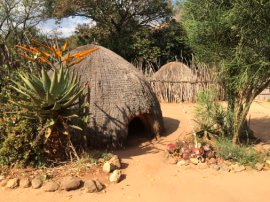 Neither the males nor females will enter each other's areas and the girls and boys will sleep in separate huts either side of the homestead. Next to the kagogo is the first wife's traditional beehive hut and her kitchen, then the other wife's huts extending outwards in an arc, each with their own kitchen. One of the reasons the homestead has such a fundamental role in Eswatini life and culture is the belief that the spirits of the family's ancestors reside within the homestead. Swazi people believe that life continues after death and their traditional lifestyle is guided by these ancestors.
Neither the males nor females will enter each other's areas and the girls and boys will sleep in separate huts either side of the homestead. Next to the kagogo is the first wife's traditional beehive hut and her kitchen, then the other wife's huts extending outwards in an arc, each with their own kitchen. One of the reasons the homestead has such a fundamental role in Eswatini life and culture is the belief that the spirits of the family's ancestors reside within the homestead. Swazi people believe that life continues after death and their traditional lifestyle is guided by these ancestors.


